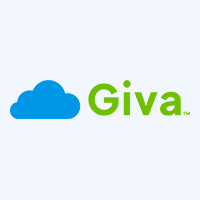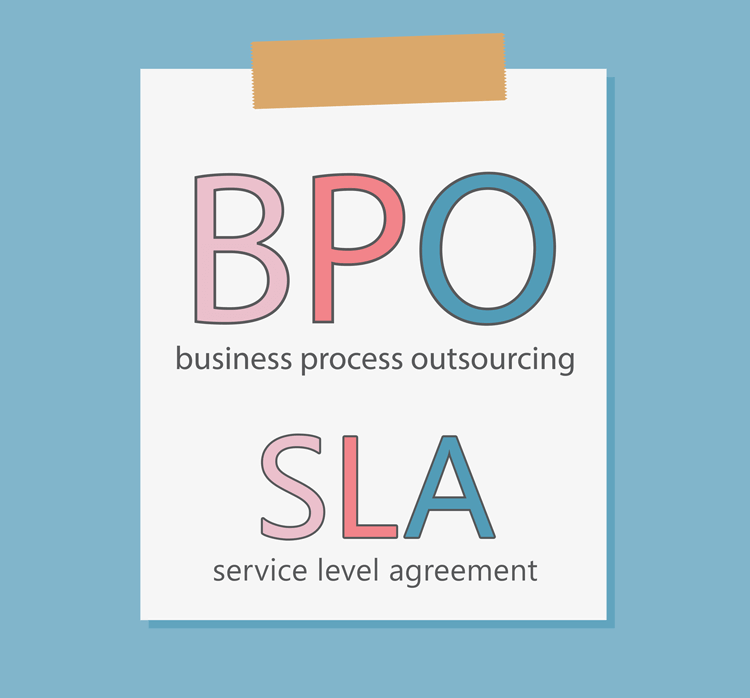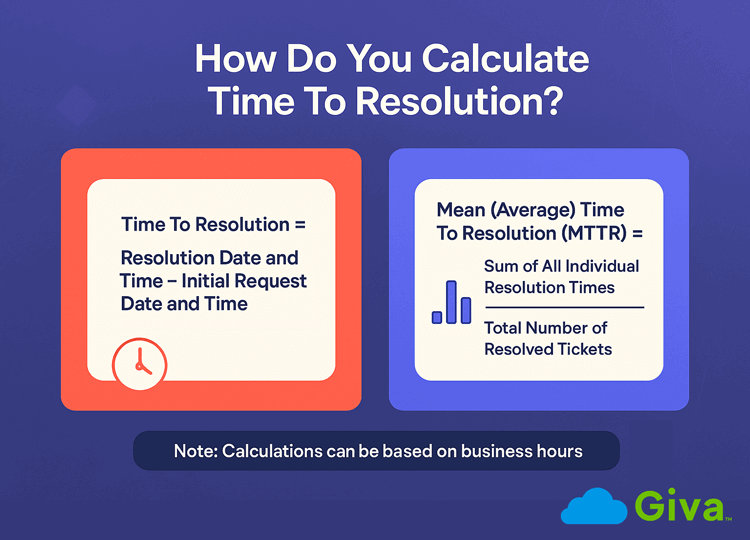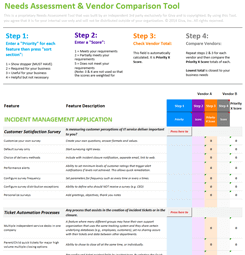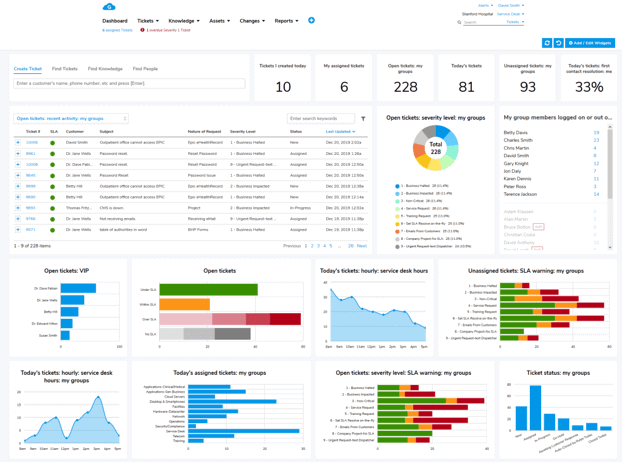Average Handling Time: Fully Examining AHT for Any Help Desk
Customer service teams face constant pressure, with the need to balance speed with delivering a quality customer service experience every time. Try and rush a call, and customers feel like just a number, or unheard. Go too slow, and costs increase while customer satisfaction also drops.
The metric Average Handling Time (AHT) sits at the heart of this challenge. It's one of the most important metrics and measurables for help desk efficiency and customer experience.
This guide will explain AHT in more detail, how to calculate it, measure it, and tools for tracking it. Most importantly, you'll discover how to optimize AHT for better customer outcomes and operational efficiency.
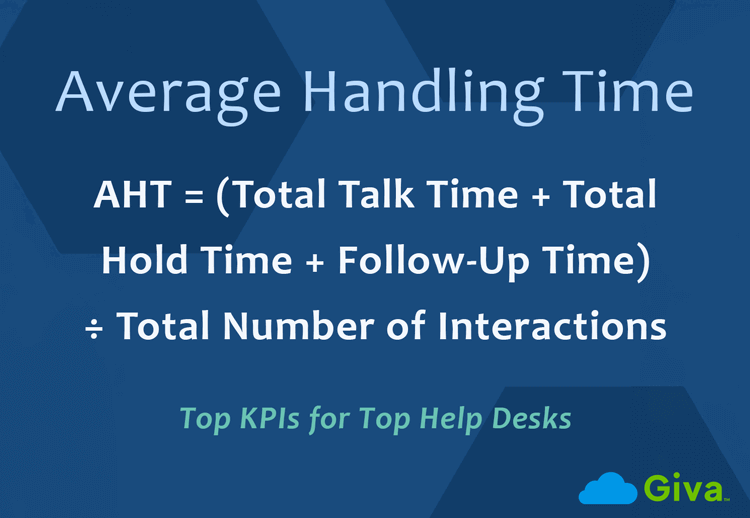
What is Average Handling Time (AHT)?
Average Handling Time (AHT) is the total time a customer service agent spends handling a customer interaction. This time runs from the moment a call, chat, or email begins to after the interaction ends.
AHT includes the active conversation time, any hold time during the call (or Live Chat), and the follow-up work done right after the customer interaction ends. The work after a call or chat could take longer than the speaking/messaging time itself, so this needs to be factored into AHT.
AHT Formula and How to Calculate AHT
The Average Handling Time formula is simple:
AHT = (Total Talk Time + Total Hold Time + Follow-Up Time) ÷ Total Number of Interactions
Breaking Down Each Component
-
Total Talk Time:
The actual time agents spend actively speaking with customers during all interactions.
-
Total Hold Time:
The time customers spend waiting. This happens while agents try and find the answer to a problem, talk with managers or support staff, or other agents, or do other tasks that will directly help the customer.
-
Follow-up Time:
This is also called wrap-up time. It covers documentation, updating the customer records, usually in a Customer Relationship Management (CRM) system, the customer account, or something similar. Mainly, agents need to finish tasks related to the interaction after the customer has hung up or ended the Live Chat interaction.
AHT Calculation Example
Let's walk through a real example. Your help desk handles 100 customer calls in one day. Here are the totals:
- Total talk time: 800 minutes
- Total hold time: 150 minutes
- Follow-up time: 200 minutes
Your AHT calculation would be: AHT = (800 + 150 + 200) ÷ 100 = 1,150 ÷ 100 = 11.5 minutes
This means your Average Handling Time is 11.5 minutes per customer interaction. Now, if that is the case, that could be high compared to your competitors, so you may need to look at why that is and how to fix it.
AHT vs. Call Duration
A common mistake is to confuse AHT with "call duration." Call Duration measures only the active talk time with the customer, while AHT also includes hold time and after-call wrap-up tasks.
For example, a call might last 7 minutes, which would be the Call Duration, but with 2 minutes of hold time and 3 minutes of wrap-up work, the AHT is 12 minutes.
This distinction is important because call duration alone doesn't reflect the full workload agents face.
Now, let's look at why measuring AHT is so important for help desks and customer service teams.
4 Reasons Why Measuring AHT Matters
-
Impact on the Customer Experience (CX)
AHT directly affects customer satisfaction scores and the overall customer experience.
Customers like to resolve their issues quickly. But they don't want to feel rushed. When this balance works well, they have positive experiences with your brand. However, very low AHT often means agents are rushing through interactions. This can leave customer expectations unmet.
-
Operational Efficiency
For help desk efficiency, AHT helps determine staffing needs and operational costs. Lower AHT usually means agents can handle more customer interactions per hour. In turn, this reduces help desk costs per interaction.
As a result, this metric assists help desk leaders in making smart decisions about resource allocation and agent productivity targets.
-
Agent Performance Measurement
AHT shows how well agents are performing. But it should never be used as a stand-alone metric. In many ways, others are more important, especially the Customer Satisfaction Score (CSAT), Net Promoter Score (NPS), and if your help desk has any sales-based metrics.
Managers should combine it with CSAT scores, First-Call Resolution (FCR) rates, and quality assurance metrics. Combined, these show how well agents balance speed with service quality.
-
The Cost-Driven Impact
Understanding your average duration per interaction helps calculate the true cost of customer support. When you know your AHT and agent hourly costs, you can find the exact financial impact of each customer interaction. This helps you make smart decisions about support process improvements.
Of course, AHT isn't an output that sits in isolation. If agents or teams have a bad day, it might simply be a bad day. However, if AHT is consistently too high or too low, then you need to look at what is influencing this. Rather than just focusing purely on one KPI in isolation.
Let's look at the four most important factors that influence AHT.
4 Factors That Influence AHT
-
Call Types and Complexity
Technical support requests naturally have higher AHT than simple billing questions. That's why some sectors, like tech/software or telecoms have higher AHT than eCommerce/retail, for example.
Complex customer queries need more time searching for answers, multiple system lookups, and detailed explanations. Understanding your call routing patterns helps set realistic AHT expectations across different support categories.
-
Agent Experience and Training
New agents usually have higher AHT. That's to be expected and is totally normal. They're still learning support processes and building confidence. Experienced agents with robust agent training and experience can handle customer interactions more efficiently.
Experienced agents can maintain service quality while working faster. Regular agent training updates help reduce average AHT over time.
-
Software and AI
Legacy systems, slow internal knowledge base searches, and poor call routing will always increase AHT. Modern help desk software with integrated knowledge base and AI tools can dramatically reduce AHT.
Automated systems and AI-powered self-serve tools, and speech analytics can cut handling times even more, and the number of calls/messages that teams handle. These platforms also improve customer experience at the same time.
-
Supporting Customers Before They Call
Well-informed customers help create lower AHT. These customers have account information ready. They can clearly explain their issues. All of this is easier when you provide as much information to them as possible, usually through online accounts, apps, and AI-powered self-serve portals.
On the other hand, frustrated customers or those transferred multiple times often need longer interactions to resolve their concerns properly.
Transform your help desk's AHT performance today. Learn how Giva's IT help desk and customer service software can help you optimize ticket processes, deliver exceptional customer experiences, and keep costs under control, including using AI Copilots.
Now, let's look at the best ways to use AHT in real-world help desk scenarios.
How to Use the AHT Formula in Real-World Scenarios
Below are three ways that AHT is usually deployed in help desk and customer experience environments.
-
Daily Operations Monitoring
Use software that will calculate AHT every hour throughout the working day. This helps you spot peak periods of customer demand, and then adjust staffing accordingly.
Morning, lunch times, and after work (if you are open after 5pm) are likely to be peak periods, when people have time to make calls.
`
-
Agent Performance Reviews
Use individual agent AHT performance data alongside customer satisfaction scores and quality service metrics. An agent with slightly higher AHT but excellent customer feedback might be giving more thorough support. This is better than someone with very low AHT but poor customer satisfaction scores.
-
Process Improvement Identification
Track AHT by call types to find specific areas for improvement. If password reset requests have unusually high AHT, you might need better automated systems. You might also need improved agent training for these routine tasks.
Next, we need to consider industry benchmarks.
AHT Industry Benchmarks
Industry benchmarks vary widely based on the complexity of services provided. There's no one-size-fits-all approach when it comes to AHT times. However, managers and CX leaders like their companies to adhere to similar standards as market-leaders and competitors.
Below are typical AHT times depending on the sector.
-
Financial Services: 4.7 minutes
Financial services may see a higher AHT than other sectors. But, time limits still need to be met as a KPI. This is usually because of security requirements, complex account issues, and regulatory compliance needs.
-
Telecommunications: 8.8 minutes
In telecoms (e.g., phone, broadband, and TV providers), there are often long and complex customer interactions.
Troubleshooting technical issues results in longer average handling times. This is usually the case when customers have an issue that they can't find an answer to via self-serve or AI-driven solutions; therefore, a call is essential to resolve the issue.
-
Retail/eCommerce: 5.4 minutes
Simple order-related questions, return processing, and basic account questions usually resolve more quickly.
-
Healthcare: 6.6 minutes
Appointment scheduling and insurance questions create a moderate amount of complexity during customer service interactions.
-
General Customer Service: 6.46 minutes, usually around six minutes is a good average
Six minutes strikes a balance between efficiency and quality service. It gives agents enough time to resolve issues thoroughly without excessive delays.
Remember that these benchmarks are reference points. Your specific AHT targets should match your customer expectations, service complexity, Key Performance Indicators (KPIs), and quality standards.
The above benchmarks, except healthcare, are from Nextiva.
AHT Omnichannel Benchmarks
In today's help desks however, we cannot forget about customer service across different channels. AHT is not limited to phone calls but includes email, live chat, and social media interactions as well, which AHTs are also measured and have benchmarks.
Tracking AHT across all channels gives a complete view of workload and efficiency:
- Live Chat AHT: Typically 2–6 minutes, since agents can manage multiple chats at once, so overall workload is distributed differently than calls
- Email AHT: Often much longer, sometimes up to 24 hours+, since responses may require review, approvals, or additional research
- Social Media AHT: Falls somewhere in the middle. On platforms with messaging, customers expect replies within minutes, whereas public comments or posts allow slightly more time, but fast responses are still necessary for reputation and customer satisfaction
Now, let's consider the best ways to improve AHT, especially if your team is struggling with this particular KPI.
6 Ways to Improve AHT
Below are 6 core areas managers and team leaders can focus on if they need to drive AHT improvements.
-
Enhance Agent Training
High-quality agent training programs directly impact AHT. Focus on product or service knowledge, communication skills, and system navigation. Agents who can find information more quickly will have better AHT scores.
Regular training updates help agents stay current with new processes. This also helps with compliance, if you're in an industry where that's important, like healthcare.
Key Training Areas:
- Product and service expertise
- System navigation and shortcuts
- Using AI effectively
- Compliance training
- Active listening and communication techniques
- De-escalation strategies for customer complaints
-
Optimize Technology Infrastructure
AI-powered help desk software with integrated customer real-time data and a knowledge base reduces time spent searching for information. Features like screen pops, automated call routing to the appropriate agent, and real-time information access can significantly lower average handling times.
-
Technology Improvements
There are numerous improvements that can be made to the software that help desks use, including but not limited to:
- Integrated Customer Relationship Management (CRM) systems
- Automated systems for routine tasks
- Internal knowledge base optimization
- Speech analytics for real-time coaching
-
Streamline Support Processes
Review your current customer service request workflows. Remove unnecessary steps. Simple process improvements can reduce average handling time while keeping service quality high.
Examples include standardized greeting scripts, automated data collection, and clear escalation procedures.
-
Implement Quality Assurance Programs
Balance AHT reduction efforts with quality service through strong quality assurance processes. Monitor customer interaction recordings. Track customer satisfaction scores.
Use NPS feedback to make sure faster handling doesn't harm customer experience.
-
Use Predictive Analytics
Advanced help desk software such as predictive analytics can predict call types based on real-time and predicted customer demand. This enables better call routing and agent preparation. When the appropriate agent gets calls matching their expertise, interactions are resolved faster. In most cases, customer satisfaction also increases.
How AHT Relates to Other KPIs
While focusing on one metric such as AHT is critical, metrics can affect each other. It is important then to understand how they relate so one metric is not sacrificed at the expense of another.
For example:
- First Call Resolution (FCR): AHT should not be reduced at the expense of FCR. A slightly longer AHT may actually improve FCR and lower repeat call volume.
- Customer Satisfaction (CSAT/NPS): Rushed calls may reduce AHT but harm satisfaction. Balanced AHT improves both efficiency and CX.
- Service Level Agreements (SLA): Many SLAs include AHT targets to bring consistent service quality and cost control.
Next, we look at the best ways to track and measure AHT.
How to Track and Measure AHT
Below are software and analytics-driven ways to track and monitor AHT in help desks.
-
Real-Time Monitoring
Help desks and CX teams need real-time AHT tracking. Analytics helps managers make immediate operational adjustments, including during the day if AHT is slipping.
Dashboard views showing current AHT trends help managers spot issues as they develop. This is a normal part of managing help desk teams, so having an accurate dashboard is an important part of a manager's job, and very familiar to agents working on these teams.
-
Integration with Customer Feedback
Combine AHT data with customer satisfaction scores (CSAT), and customer feedback surveys. This cross-over helps team leaders understand the relationship between handling time and customer experience.
With an integrated approach, it prevents the common mistake of rushing through calls too quickly at the expense of providing great customer service. You must strike the right balance between both.
-
Advanced Analytics and Reporting
Look beyond basic AHT numbers by analyzing patterns and trends. Weekly and monthly reports should show AHT variations by:
- Time of day and day of week
- Agent performance and experience levels
- Customer interaction types and complexity
- Seasonal trends and business impacts
-
Continuous Improvement Process
Set up regular review cycles for AHT performance. Monthly meetings should examine AHT trends alongside customer satisfaction data, agent feedback, and operational costs. This complete approach ensures improvements benefit both customers and business operations.
Following on from that, let's look at ways that help desk managers can optimize AHT.
Giva's Support of AHT Management
Giva's AI-powered software assists help desk leaders in optimizing performance without sacrificing customer experience. It provides detailed breakdowns by agent, call type, and time period.
Key features of Giva's customer service software include:
- Real-time analytics and reporting
- Integration with customer satisfaction measurement
- Real-time dashboard monitoring
- Historical trend analysis for process improvements
- Agent performance insights balanced with quality metrics
Transform your help desk's AHT performance today. Get a demo to learn how our software can help you optimize Average Handling Time (AHT), deliver exceptional customer experiences, and keep costs under control thanks to AI support.
Best Practices for Optimizing AHT
Making improvements is the nature of the business when it comes to managing customer service teams. Managers are always looking for ways to make improvements. Below are a few ideas for team leaders.
-
Balance AHT Speed and Quality Service
Never optimize AHT in a silo. It isn't a solo KPI. The goal isn't the lowest possible average handling time. Every manager should aim to make sure team members are balancing speed and quality. Deliver the best customer service in the most efficient time. Monitor customer expectations and feedback to find this balance point.
-
Set Realistic Targets
AHT targets should reflect your specific business needs, customers, and service complexity.
Unrealistic targets lead to poor customer experience, and higher agent turnover. If agents can't hit targets, and this is consistent across every team, then the targets are unrealistic, and managers need to adjust accordingly.
-
Invest in Agent Development
Long-term AHT improvements come from skilled, confident agents delivering excellent service and efficiently resolving customer issues. Ongoing agent training, coaching, and support create sustainable improvements. This always works better than short-term fixes.
-
Use Automation and AI Strategically
Automated systems, like AI tool integrations, work great for routine tasks, if you can embed these into:
- Account verification
- Routine information lookup
- Simple transaction processing
Then it makes it easier for customers and the CX team. Use automation to handle these elements. This frees agents to focus on complex problem solving and relationship building.
Average Handling Time Key Takeaways
Average Handling Time serves as a critical bridge between operational efficiency and the quality of the customer experience. When properly understood and optimized, AHT assists help desks in delivering faster service. Don't sacrifice the personal touch that builds customer loyalty.
The key to successful AHT scores is when you take a balanced approach. Consider customer satisfaction scores (CSAT, NPS, etc.), agent performance, and operational costs efficiency as a combined equation. Don't focus only on delivering services as quickly as possible.
Remember that AHT optimization is an ongoing process. It requires continuous monitoring, adjustment, and improvement. Start with an accurate measurement system. Understand your current performance against industry benchmarks. Implement changes systematically while tracking their impact on both efficiency and customer experience.
AHT Resources
- Customer Service Resource Center
- Free IT and Customer Service Guides and Insights
- Free Support Tools and Templates
Giva Can Help Your Agents Resolve Tickets Quicker
Transform your IT help desk or customer service team's AHT performance today by learning how Giva can benefit your support organization. Get a demo to see Giva's solutions in action, or start your own free, 30-day trial today!
